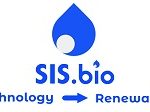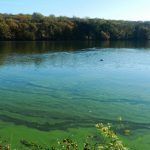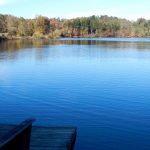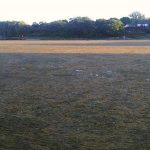SIS.bio Toxic Hazardous Algae Bloom and Cyanobacteria Solutions

SIS.bio is a leading biotechnology solutions provider of integrated resource services for water quality management, including treatments for wastewater and bulk-water.
A critical component of our portfolio is the eutrophy solution, which is designed to eliminate invasive aquatic weeds, excessive algae and toxic cyanobacteria hazardous algae blooms (HABs). Our solutions are proven internationally in all climates and conditions and are scalable across water bodies.
We have delivered sustainable solutions to lakes, hydroelectric dams, drinking water reservoirs and river systems.
Understanding the root causes of problems in the water cycle
Urbanisation, man-made input from wastewater treatment plants and agricultural activities, load water resources with contaminants/nutrients that drive the eutrophication and dominance of aquatic weeds, algae and toxic blue-green algae blooms. As the nutrient load is already in the water and sediments, this will continue to increase eutrophication and be worsened by global warming.
Nutrients, including phosphorus and nitrogen, nourish destructive biomass such as weeds, algae and cyanobacteria, which highlights a distorted nutrient cycle. The only way to reverse eutrophication is to manage the physical conditions in the biome to enhance nutrient uptake in a productive biodiverse food chain, so SIS.bio offers a biotechnology solution.
Improving on conventional treatments that make toxic HABs worse
For years, the standard practice has been to treat the symptoms:
- Invasive weeds were killed with herbicide
- Algae blooms were killed with algaecide
- Toxic CyanoHABs could not be killed as it causes toxin release
As all biomass is killed and drops to the bottom, it decomposes to add to the nutritious sediment. Cyanobacteria are able to dive down to the bottom and feed on these nutrients, so conditions become increasingly favourable for them.
Aeration systems designed to raise dissolved oxygen levels and precipitate phosphorus into the sediments have the same effect, as do chemical precipitants such as alum.
These treatments exacerbate HABs so water professionals are turning to SIS.bio’s proven, effective, scalable and sustainable solutions.
Systemic solutions to eutrophication and toxic CyanoHABs
Leveraging sophisticated biotechnology and bio-engineering, we are able to create pervasive conditions in the aquatic biome that reverse eutrophication.
- Affecting physical changes achieves destratification and reoxygenation of both the water column and the benthic sediment
- Accelerating catabolic metabolism enables us to digest organic sediments and nutrients and eliminate them from the water body
- By promoting metabolic processes that drive biomass formation at the base of a productive sustainable food chain, we re-establish biodiversity and deprive nutrients to algae cyanobacteria
By neutralising conditions that favour cyanobacteria dominating nutrient uptake, blue-green algae cannot proliferate, bloom or dominate to produce toxic HAB blooms.
Since our eutrophy solution is systemic and addresses the root causes, it systematically addresses all symptoms. Its benefits and processes include:
- Destratification of the water column
- Reoxygenation of the water column and anaerobic benthic sediments
- Control of invasive aquatic weeds
- Elimination of excessive algae blooms
- Elimination of toxic blue-green cyanobacteria blooms
- Reduction of phosphorus and nitrogen
- Reduction in benthic sediments (bio-dredging)
- Elimination of fish kills
- Reduction in treatment chemical costs for water purification plants
- Improved numbers and health of fish
Proven uses of SIS.bio’s solutions in water treatment
SIS.bio has been used to treat facilities, lakes and reservoirs across the US.
At Coxsackie Prison in New York, the toxic CyanoHABs in the drinking water reservoir meant that the prison had to operate using bottled water. Within six months, the reservoir was restored to pristine condition and was supplying drinking water to the prison.
Working at the Toa Vaca Reservoir in Puerto Rico, not only did we eliminate problems with algae, manganese and geosmins, chemical treatment costs were cut in half and compliance for trihalomethanes (TTHMs) was achieved.
Beaches at Hammonton Lake, New Jersey, were shut to the public for all but a few days every year due to excessive E. Coli levels caused by inflows from an upstream sewage plant. E. Coli was sustainably brought into compliance levels.
Lake Peekskill, New York, was shut to the public all year, except three days, due to toxic cyanobacteria blooms. It is now free of CyanoHABs.
Lake Harmony, Pennsylvania, no longer spends money restocking the lake with fish to attract anglers. The fish are so abundant, healthy and robust, that there is no need to.
About SIS.bio
SIS.bio provides a full range of professional services to survey and assess the water body, develop a solution, and then install and implement, as well as maintain a sustainable solution anywhere in the world.
Related Projects
Press Release
Warmer weather means warmer water, which is a catalyst for the overgrowth of highly toxic blue-green algae known as cyanobacteria harmful algal blooms or cyanoHABs in ponds, lakes and reservoirs.
Read moreRegional Offices
Suite 2, 827 Lincoln Ave
West Chester
PA 19380
United States of America
















